Home Coming: Reclaiming and Championing Your Inner Child

John Bradshaw in his book, Home Coming asks the question, "How do all those tender elves (the delightfully vibrant, alive, naive, optimistic, filled-with-wonder children) become murderers, drug addicts, physical and sexual offenders, cruel dictators, morally degenerate politicians? How do they become the "walking wounded"? We see them all around us; the sad, fearful, doubting, anxious, and depressed, filled with unutterable longings. Surely this loss of our innate human potential is the greatest tragedy of all."
How do you convert a newborn infant into a broken person?
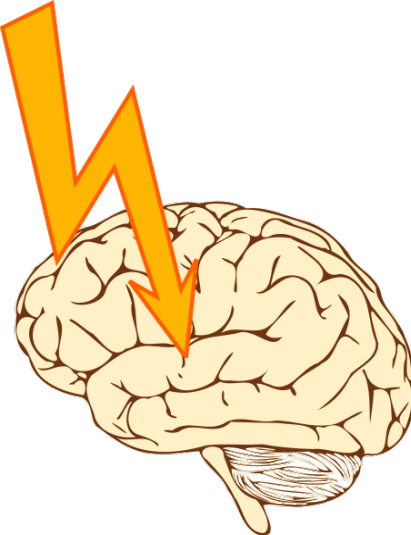
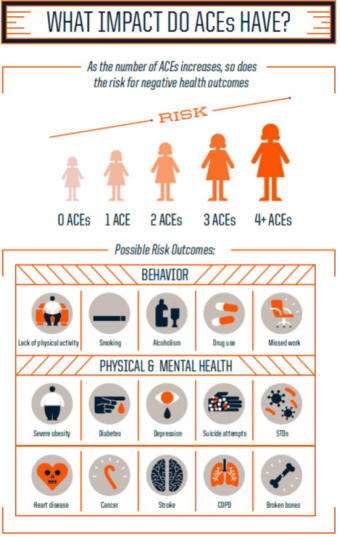
This wounding occurs through a whole series of ADVERSE CHILDHOOD EXPERIENCES which shut down our vulnerable inner emotional core and we develop a whole series of unskillful and harmful coping mechanisms (and deep emotional woundings) that continue with us into adulthood, unless acknowledged and transformed. These coping mechanisms DID help us survive the challenging experiences of childhood the best way we knew how. Now, they have outlived their usefulness.
Dr. Vincent Felitti from Kaiser Permanente in Southern California carried out a ACE study (Adverse Childhood Experiences)* to explore the relationship of health risk behaviors and disease in adulthood to the breadth of exposure of household dysfunction during childhood. To visit the ACE website visit: http://www.cdc.gov/ace/index.htm and the ACE Pyramid: http://www.cdc.gov/ace/pyramid.htm
Seven categories of adverse childhood experiences were studied: psychological, physical, or sexual abuse; violence against mother; or living with household members who were substance abusers, mentally ill or suicidal, or ever imprisoned. The number of categories of these adverse childhood experiences was then compared to measures of adult risk behavior, health status, and disease.
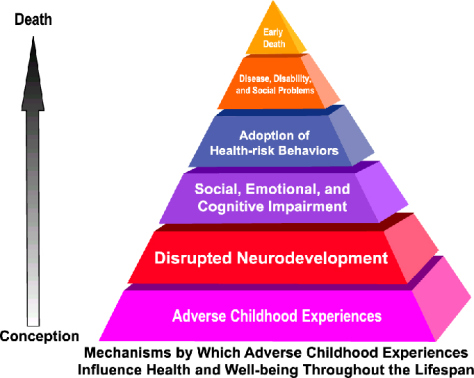
Persons who had experienced four or more categories of childhood exposure, compared to those who had experienced none, had 4- to 12-fold increased health risks for alcoholism, drug abuse, depression, and suicide attempts; a 2- to 4-fold increase in smoking, poor self-rated health, or > 50 sexual intercourse partners, and sexually transmitted disease; and a 1.4- to 1.6-fold increase in physical inactivity and severe obesity.
What happens to people as children determines what is going to happen to them as adults.
In other words, most of what happens to us as ADULTS
is set up by
what DOESN'T happen to us as children!
Many chronic diseases in adults are determined decades earlier by what happens in childhood. The EMOTIONAL experiences were an antecedent to the health risk problems as adults. The ADULT UNHEALTHY BEHAVIORS ARE:
-
Smoking
-
Cardiovascular Disease
-
Obesity (overweight)
-
Alcoholism
-
Depression
-
Promiscuity
-
IV Drug Use
What I heard about this study I was AMAZED! This described me, many of my friends, and our whole family. I finally understood WHY we were such a "wounded bunch of adults." I finally understood why my "journey out of the past" was SO difficult. It was SO VALUABLE to me when I made the choice to seek out outside assistance to help me unravel my numerous self-destructive mental, emotional, and physical patterns that I had created. I felt STUCK and hopeless at the time.
Learning about typical human stages of growth, and how a DYSFUNCTIONAL ENVIRONMENT wounds a vulnerable child, and coming to understand the effects, was emotionally freeing. I WASN'T FLAWED! I was just CONDITIONED to have certain response patterns which could be changed. I used a series of TOOLS to help me begin changing.
What are some tools to use so you can stumble over your triggers and coping mechanisms and bring about inner healing?

-
Start journaling. Start writing and notice the content of your brain. See what comes out--follow a stream of consciousness. PAY ATTENTION! THE SOLUTION IS IN THE AWARENESS ITSELF. Awareness promotes action with insight.
-
Don't rush into making immediate changes. Just notice what your patterns of thoughts, emotions or moods, and physical actions are. Notice how people, places, and substances influence you now.
-
Take the time to explore resources (see resources and links below) that help you understand how your initial life experiences might have impeded your normal development, and how they are influencing you now, and what you can do to initiate changes to learn new behaviors. Visit also Bob's Story--The Roots Parable. To change, you must learn to become a loving caregiver to your inner emotional self. You must learn how to nurture yourself.
-
Shine The Light of Self-Care on Yourself to Transform Inner Pain!
-
Consider taking the time to work with the STAGES OF CHANGE process.
-
Do it your way. Do what works for you!
-
Give it some thought to: Therapeutic Help for Your Journey
To read an excellent article by Mary Sykes Wylie about this topic: As-the-twig-is-bent-ACE STUDY.pdf Mary Sykes Wylie, Ph.D., is the senior editor of the Psychotherapy Networker at www.psychotherapynetworker.org
Pictures Below Show the Process of Reclaiming and Championing myself at Different Stages of Development
Bradshaw guides a person through this process in his book.
(Click on the thumbnail to see a larger image.)
I read through and followed the suggestions in the book and found it to be extremely helpful. See below the links to other sections of this web site and my story for how I worked through this difficult and FREEING process.
Some Helpful Resources and Links
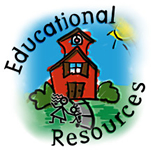

Celebrate Healthy Mental States, Self-Nurturing, and Self- Esteem
From Library Journal
The authors, both cognitive psychotherapists, identify 11 common "lifetraps," which they define as repetitive, destructive behavior patterns associated with a negative self-image. Using illustrations from case studies, the authors describe each lifetrap, discuss its origins in childhood experience, and provide a questionnaire for self-assessment. They then offer a program for change using techniques ranging from experiential (getting in touch with your inner child) to cognitive (writing a "case" against your lifetrap) and behavioral (identifying specific behaviors to be changed). - Lucille Boone, San Jose P.L., Cal. Available at: www.amazon.com
SELF-PARENTING--INNER CHILD HEALING VIDEOS by John Pollard: https://www.youtube.com/watch?v=z8qTncsNbK8 and https://www.youtube.com/watch?v=vK_l24xApLo Website: https://www.selfparenting.com/ SELF-Parenting: The Complete Guide To Your Inner Conversations
You Can Heal Your Life is a beautifully written and illustrated book dealing with self-discovery. It is a stepping stone in finding the real person you are and exploring ways that will lead to a more peaceful and happy life. Often, we are our own worst enemies with imaginary fears of what the future will bring, or we are dwellers of our past mistakes, regrets and misgivings. The importance of discovering and accepting our true self for who we really are, and the search for a more fulfilling life, are explored among the pages of this book. I used this book extensively and found it to be quite amazing and really helpful. Check out http://www.hayhouse.com/
-
Celebrate Your Self - Making Life Work For You (Your Child's Self Esteem), by Dorothy Corkille Briggs, (1986), Main Street Books. I found this book to be really helpful. I read both of these books extensively. They were wonderful. They helped me understand why I hated myself and how I could begin to change. They are also available used for very reasonable prices.
-
Changing from the Inside Out: Skills for Resolving Emotional Eating, a workbook and class (if you are in the Portland, Oregon metropolitan area). Goals for the class and workbook: Explore the emotional aspects of your weight; Identify personal needs and how to meet these needs; Set realistic expectations; Appreciate & care for your body; Improve overall self-care; Practice eating for health & pleasure; and Create a fulfilling lifestyle. The workbook can be purchased individually for $20. It is EXCELLENT. Call or contact Christine Jensen, RD, Ph.D., individual and small group counseling, 8140 SW 146th Terrace, Beaverton, OR 97007, 503-641-9136, changingfromtheinsideout@hotmail.com
-
Learning To Love Your Self, by Gay Hendricks, (1982), Prentice Hall Press, New York
-
Living Juicy-Daily Morsels For Your Creative Soul, & The Bodacious Book of Succulence by SARK (1994), Celestial Arts, Berkeley, California. For a catalog, call: (800) 841-BOOK. These books (and SARK'S Web site) are SO MUCH FUN and are delightfully colorful! http://www.planetsark.com/ at Plantet SARK!
-
Self-Esteem, by Matthew McKay, PH.D. & Patrick Fanning, (2000), New Harbinger Publications, Inc.
-
What To Say When You Talk To Your Self, by Shad Helmstetter, (1990), Pocket Books. This book in very practical and understandable terms helps unravel the mystery of how self-talk creates our inner conditioning which creates our success or our failures. Check it out! Available used.
-
Healing from Depression: 12 Weeks to a Better Mood, by Douglas Bloch, M.A., (2002), Celestial Arts Publishers, www.healingfromdepression.com See Ecosystem Weight Management for a description of book.
-
You Can Be Happy No Matter What: Five Principles for Keeping Life in Perspective, by Richard Carlson, Ph.D., (1997), New World Library. Richard shares PRINCIPLES ABOUT: of thoughts, about moods, of separate realities, of feelings, and of the present moment. He helps the reader create more effective relationships, understand stress, and solve problems in life to increase happiness and reduce addictive behaviors. Provides a "checklist for your life."
-
The Feeling Good Handbook, by David Burns, M.D., (1999), a Plume Book. David shows you how to overcome depression, conquer anxiety, and enjoy greater intimacy. Provides methods to diagnose your moods and understand them, and apply 4 steps to happiness. Includes a comprehensive discussion of mood-altering medications.
-
Home Coming-Reclaiming and Championing Your Inner Child, by John Bradshaw, (1992), Bantam Books. Excellent, practical, helpful book on learning to embrace your inner emotional self.
-
The Relaxation & Stress Reduction Workbook, by Martha Davis and Mathew McKay, (2002), New Harbinger Publication, Inc.
-
www.teachhealth.com Gives the medical basis of stress, depression, anxiety, sleep problems, and drug use—explained in a fun, easy-to-read format.
-
Self Parenting-The Complete Guide To Your Inner Conversations, by Dr. John K. Pollard, III, (1987), Generic Human Studies Publishing This book includes lots of fun pictures and explores terrific journaling techniques to explore connecting with your inner emotional self and changing the "feeling tone" of your relationship with yourself.
-
Women’s Comfort Book, by Jennifer Louden, (1992), Harper-Collins, NY This book is GREAT! It provides hundreds of suggestions on how to care for ourselves. Examples: get silly!, play? who me? how?, comfort cards to supply dollops of delight, body delights, nutritional music, spirit succor, and an alphabetical guide of "comfort at a glance". Oh, what FUN!
-
Another terrific resource is the book The Life Organizer: http://jenniferlouden.com/lifeorganizer/
Helpful sections of this Web site:
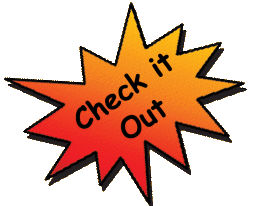
- Developing Your Own Internal Loving Voice
- When Helping You Is Hurting Me
- Rules for Being Human
- Out of Hell, Into Freedom Meditations
- Ideas for Self-Nurturing
- An Alphabetical Guide to Zestful Living
- Gratitude List
- Be Happy!
See Bob's Story for For ideas on how I GRADUALLY applied the AMAZING WISDOM that is contained in the resources above. Check out:
To help TAKE CHARGE of this pattern, explore:
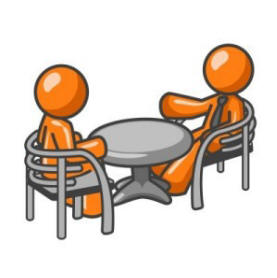
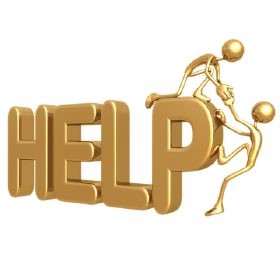
*Am J Preventative Medicine 1998:14 (4) Relationship of Childhood Abuse and Household Dysfunction to Many of the Leading Causes of Death in Adults. Vincent J. Felitti, MD, FACP, Robert F. Anada, MD, MS, Dale Nordenberg, MD. David F. Williamson. MS. PhD, Alison M. Spitz, MS, MPH, Valerie Edwards, BA, Mary P. Koss, PhD, James S. Marks, MD, MPH



